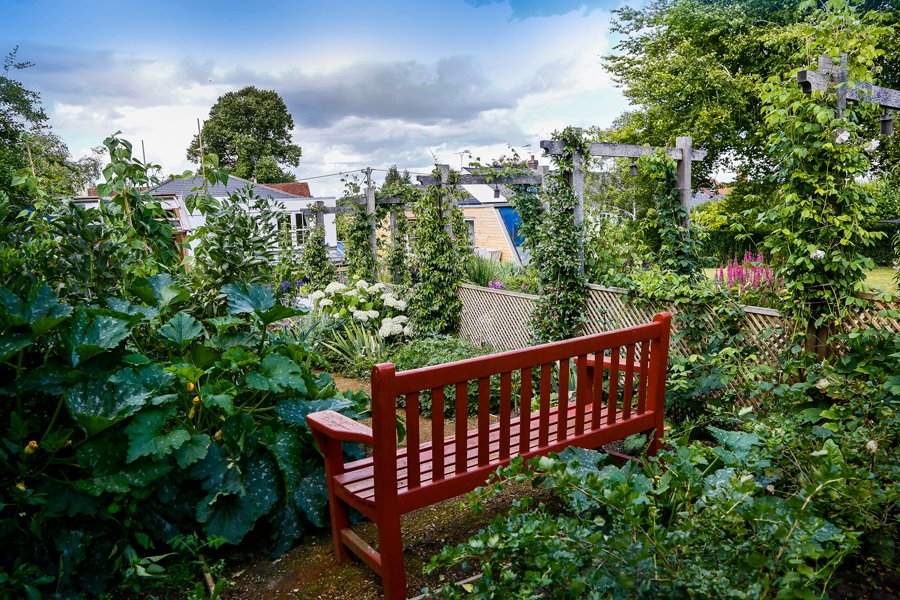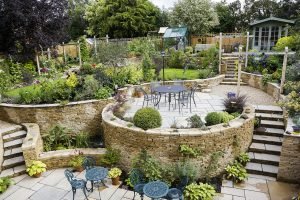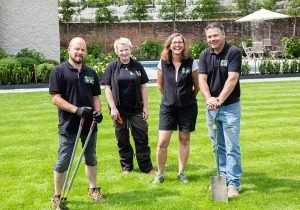
My grandmother was a huge influence on my passion for gardening. I very fondly recall the long summer days spent alongside her and my parents at their shared allotment. Had you ever had the pleasure of visiting her, you wouldn’t have needed the exact address, you could have identified her front door by it being the one with the most pots and flowers and shrubs (and the odd garden gnome of course).
My Grandmother developed osteo and rheumatoid arthritis, had three knee and a hip replacement in her later life. Whilst we all did our best to help keep her involved in her beloved garden, the more the conditions deteriorated, the less access, ownership and involvement she could have.
In a life before coming to work at GreenArt, I used to be a Social Worker in the Berkshire area, working with older people and people with physical disabilities. I saw more and more situations where people lost access to their garden and as a result, their wellbeing deteriorated as this loss contributed to a feeling of being less in control of their homes and their lives.

Now through my role as a Landscape Gardener at GreenArt, I have the opportunity to work with an experienced designer, other gardeners and landscapers who help people re-imagine their gardens, when living with disabilities or for continued access in later life. You can see this in George’s design in Ewelme for two sisters who love gardening and growing vegetables and wanted to continue to enjoy it during their retirement.

Here are a few things to consider when re-imagining your garden for better access, less hard work and more enjoyment for all;
- Paths – The standard width for a path is one meter, However, wheelchair or scooter users can require up to 2 meters of space to ensure an adequate turning circle.
- Seating – Seats around containers or within large beds can make it easier to reach your plants and rest while you are gardening. You may also want to consider shade over some seating for gardening in warmer weather.
- Coping with slopes and levels – Handrails positioned alongside steps and steep gradients or ramps can improve access. Ramps can be put in place for wheelchair use, but where this isn’t viable, you could also consider purchasing temporary/moveable ramps online.
- Planting choices – choose evergreens and flowering shrubs that are slower growing and need less maintenance such as Choisya Ternata. Choose long-flowering perennials so that you’re not forever dead-heading such as Campanula Pritchard’s Variety.
- Raised beds – Narrow or square raised beds and borders with a hard surface next to them make it easier to reach your plants from a seat or wheel chair.
- Weed control – Apply thick bark mulch to an established bed or if creating a new bed, plant through a weed-control membrane and cover spaces with gravel so you can spend your time on your plants and not the weeds.

And don’t forget to think about hand tools and special aids that can really make light work of gardening if you have a disability or difficulty getting around your garden. Many tool makers also offer lightweight tools and long handled tools to reduce the need for bending down. One great business local to us in Oxfordshire that offer such tools, as well as great advice, are our friends at Springchicken.co.uk.
For more tips and advice on accessible gardens, why not visit local gardening charity Thrive’s website, www.thrive.org.uk
And if you are looking for a garden re-design to improve access or just need to regain control in your garden if you’ve not been able to spend time on it yourself, why not give us a call. We would be happy to suggest some ideas or send our experienced team in to help you and your loved ones to get the best use out of your gardens for as long as is possible.

New products in the GreenArt shop
We at GreenArt can provide help at any level
From planning a wildlife garden, building hides, constructing ponds and streams, creating paths and planting trees and shrubs.








